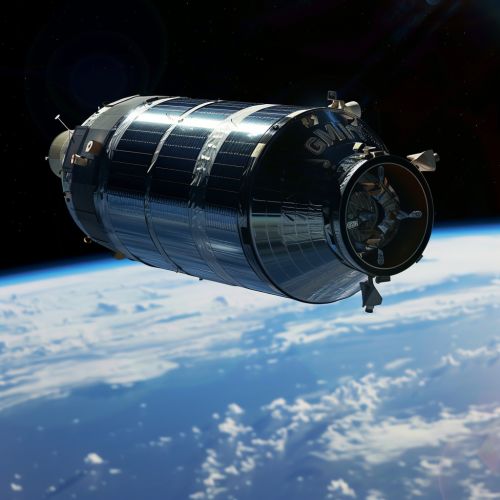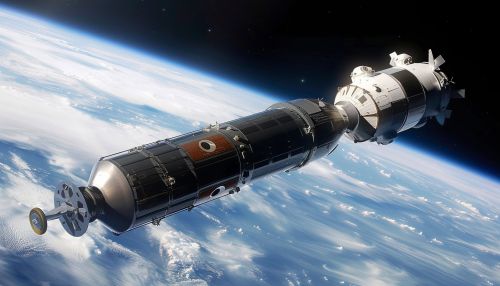Gemini spacecraft
Overview
The Gemini spacecraft was a significant component of NASA's Project Gemini, which was the second human spaceflight program of the United States. The program was conducted between projects Mercury and Apollo with the goal of developing techniques for advanced space travel, notably those necessary for Apollo's lunar missions. The Gemini spacecraft carried a two-astronaut crew and was launched by the Titan II launch vehicle. It was designed and built by the McDonnell Aircraft Corporation.


Design
The Gemini spacecraft was designed to carry two astronauts for missions lasting up to two weeks. Unlike Mercury's capsule design, Gemini was planned as a modular spacecraft with a reentry module for the crew and an adapter module for equipment and propulsion. The spacecraft was 5.61 meters long and 3.05 meters in diameter, with a total mass of approximately 3,763 kilograms.
Reentry Module
The reentry module was the crew's living quarters during the mission. It contained two seats, instrument panels, life-support equipment, and provisions for the crew's needs during the mission. The module was also equipped with a heat shield for reentry into the Earth's atmosphere.
Adapter Module
The adapter module was divided into a retrograde section and an equipment section. The retrograde section housed four solid-fuel rockets that were used to slow the spacecraft for reentry. The equipment section contained the spacecraft's primary propulsion system, fuel cells, and other necessary equipment.
Operation
The Gemini spacecraft was launched into orbit by the Titan II launch vehicle. Once in orbit, the spacecraft could change its orbit, rendezvous and dock with other spacecraft, and perform extravehicular activities (EVAs), also known as spacewalks. These capabilities were crucial for the success of the later Apollo lunar missions.
Launch and Orbit
The Gemini spacecraft was launched from Cape Canaveral Air Force Station in Florida. The Titan II launch vehicle would place the spacecraft into a nearly circular orbit around the Earth. Once in orbit, the spacecraft's onboard propulsion system could be used to change the spacecraft's orbit.
Rendezvous and Docking
One of the primary objectives of Project Gemini was to develop techniques for rendezvous and docking with other spacecraft. This was a necessary capability for the Apollo lunar missions, which required the lunar module to rendezvous and dock with the command module in lunar orbit. The Gemini spacecraft achieved its first rendezvous with the unmanned Agena Target Vehicle during Gemini 6A, and its first docking during Gemini 8.
Extravehicular Activities
Project Gemini also aimed to develop techniques for performing EVAs. The first American EVA was performed by Edward H. White II during Gemini 4. The Gemini spacecraft was equipped with a hatch that could be opened in space, and the astronauts were equipped with handheld maneuvering units to help them move around in the vacuum of space.
Legacy
The Gemini spacecraft and Project Gemini as a whole played a crucial role in preparing NASA and its astronauts for the Apollo lunar missions. The techniques and technologies developed and tested during Project Gemini, such as rendezvous and docking, EVAs, and long-duration spaceflight, were directly applicable to the Apollo missions and are still in use in human spaceflight today.
